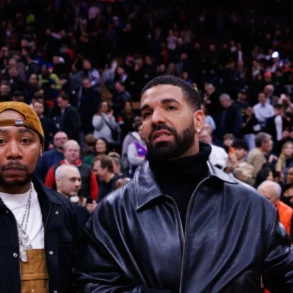
The late summer months of August and September celebrate both the anniversary of hip-hop as well as Hispanic heritage, a fitting combination since Hispanic culture and sound have had a significant impact on the evolution of not just Latin Hip-Hop, but hip-hop in general, in a story that tells a dynamic journey reflective of the interplay between cultural identities, socio-political contexts, and musical innovation.
Emerging in the late 1980s and early 1990s following the introduction of rap and hip-hop into mainstream music, Latin hip-hop as we know it today began as a powerful voice for Latino communities in the United States, not just in New York City and Los Angeles, but throughout the country and the world.
While the original roots of Latin hip-hop can be traced to the influence of pioneering African American hip-hop artists, Latino artists, inspired by the burgeoning hip-hop culture, began to incorporate their unique cultural elements, such as Spanish lyrics and traditional Latin rhythms, into their music. This fusion gave birth to a distinct genre that resonated with Latino youth, who saw it as a means to express their experiences and challenges.
Advertisement
Early Latin hip-hop artists like Mellow Man Ace and Cypress Hill played a pivotal role in popularizing the genre. Mellow Man Ace’s 1989 hit “Mentirosa” blended English and Spanish lyrics, showcasing bilingualism as a signature of Latin hip-hop. DJ Charlie Chase, the DJ for the hip-hop group the Cold Crush Brothers, fused elements of salsa with hip-hop in New York in the 1980s. In 1992, Mesanjarz of Funk was the first Spanish rap group signed to a major label (Atlantic Records).
As the genre evolved throughout the 1990s, a new wave of artists emerged, diversifying Latin hip-hop’s sound and reach. Like hip-hop in general, Latin hip-hop didn’t have a uniform sound. While each region and artist had their distinct sound, all of the artists were instrumental in shaping the Latin American hip-hop scene, addressing social issues and personal struggles through their music.
Oakland-based group Lighter Shade of Brown adopted a distinct Bay Area sound, while artists such as Frost, Cypress Hill, and others from Southern California had a distinct LA sound. Chino XL of New Jersey made a splash with his unique sound influenced by Cypress Hill and East Coast hip-hop artists of the mid-1990s. In 1998, New York’s Big Pun became the first Latin solo artist to reach platinum sales for his 1997 album Capital Punishment, which included the classic hit “Still Not a Player.” Jennifer Lopez further brought elements of Latin music into the hip-hop and pop genres, solidifying herself as one of the most successful Latina musical artists in the United States.
The evolution of Latin hip-hop wasn’t limited to the continental United States. Acts like Control Machete from Mexico and Vico C (often known as the “father of Spanish rap”) and Lisa M (sometimes referred to as “the queen of Spanish rap”), both from Puerto Rico, introduced regional styles and narratives, broadening the genre’s appeal. In Puerto Rico, Tego Calderon was also one of the first artists to blend hip-hop and reggae elements, paving the way for artists such as Daddy Yankee and giving rise to reggaeton. This genre fused hip-hop, dancehall, and Latin rhythms. Lego Calderon and Daddy Yankee’s success quickly demonstrated Latin urban music’s commercial viability on an international scale- especially when the internet quickly allowed culture to transcend global boundaries.
In the 2010s and beyond, Latin hip-hop continued to evolve, embracing new influences and technologies. Artists like Mochakk, Jessica Audiffred, Geo, Carolo, ARTIX!, and more have pushed the boundaries of the genre, integrating EDM into their distinct sounds. Snow the Product established herself as one of the most versatile female artists in the genre, while Becky G established a strong crossover presence on both the Spanish charts and mainstream American Top 40 charts. These artists have achieved massive global success, breaking language barriers and solidifying Latin hip-hop’s place in the mainstream music industry.
Today, Latin hip-hop reflects a rich tapestry of influences and is a powerful medium for storytelling, cultural expression, and social commentary. Artists such as Karol G, Peso Pluma, Bad Bunny, and more continue fusing Latin and hip-hop elements into mainstream American music. In contrast, international artists from Central and South America continue to build global fanbases. Through it all, Latin hip-hop stands as a testament to the resilience and creativity of Latino artists. It will likely continue to evolve, remaining a dynamic and influential force in the global music landscape.
This post was originally published on this site be sure to check out more of their content.






